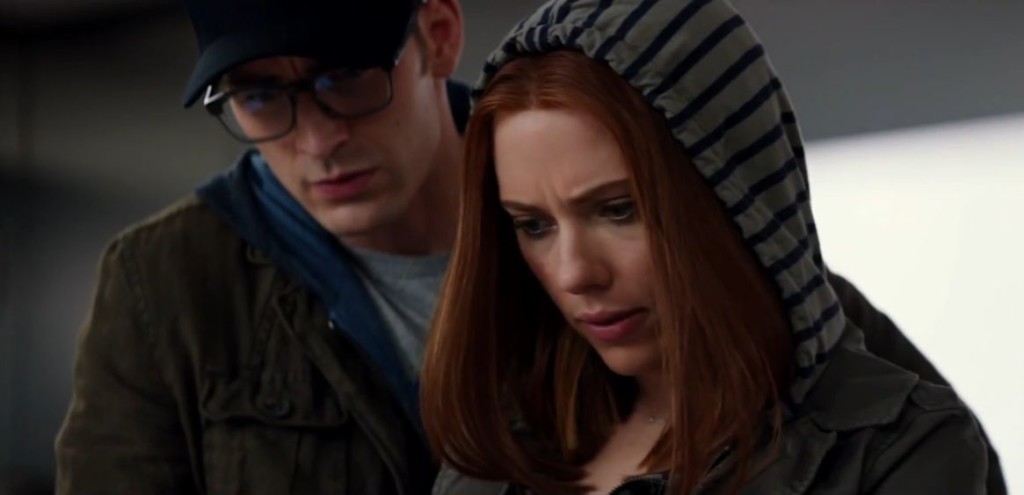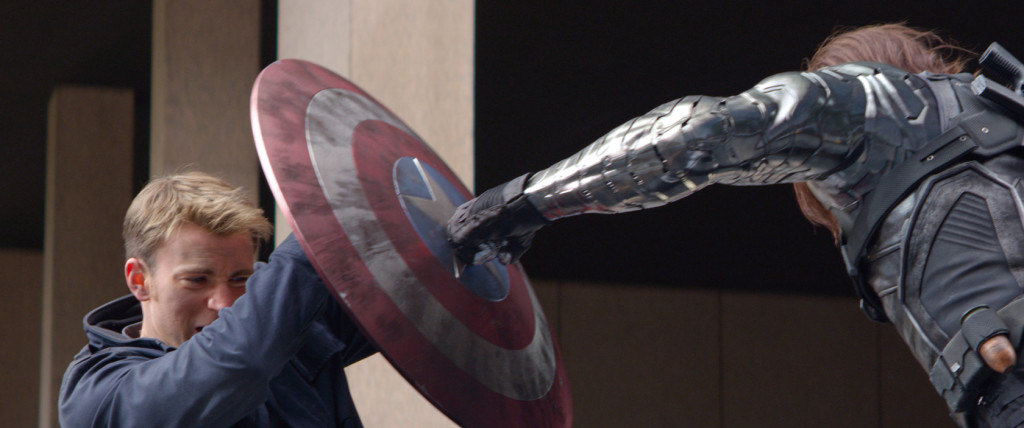Captain America: The Winter Solider is a pretty great political thriller inevitably shoehorned into a Marvel franchise vehicle. Let me explain.
If I had to guess, we’d call this one of Phase 2’s best films; in fact, Phase 2 of the Marvel Cinematic Universe shows a rather large uptick in quality, predicated first by the diverse use of directors, and second by the variety of styles inherent in those directorial choices. While Thor: The Dark World bored me with its generic fantasy/action with wormholes (so much so that I wrote absolutely nothing about it at all), and Guardians of the Galaxy recreated Marvel Star Wars with mixed success, The Winter Solider manages to create the atmosphere of a 1970s conspiracy thriller. I can’t imagine the throwback to the times of The Odessa Files or Three Days of the Condor was unintentional; the casting of Robert Redford appears like a knowing nod to such paranoid times.
Post-9/11, these sorts of plots hold new relevance in upholding vague principles of “freedom” and “justice”, ideals which Captain America fully embodies. If you want to think of Captain America as the relic of a bygone time, you are more than welcome to do that. In the Marvel universe, however, he represents some strange moral compass that 90 years of life can give you. If the first movie exemplified the social mores of World War II-era America, what with the black/white morals of the fight against the Nazis, then The Winter Soldier takes the modern tack. We do not know the enemy; they spring upon us when we least suspect, and the people closest to our heart may turn out to betray us when the time comes. In effect, this becomes an incredibly interesting setting for a character adapting to the changes that took place while he could only wait in frozen stasis. The world he knew and the modern world look very different!
Weirdly enough, though, the film tends to backtrack on its established moral ambiguity. In one sense, that’s a component of the Marvel Cinematic Universe. In a word, one could call it “lowest common denominator” entertainment, and I don’t mean that in the negative. Giant blockbuster action films, by necessity, paint character traits and philosophical ideals in broad strokes because of the diversity of its audience. Captain America’s the protagonist, so he must enforce the version of morality to which we must associate and accept as “right”. Some people just want to sit back and enjoy a bunch of dudes smacking each other with both fists and other objects; others want a decent film and an engaging plot with a smattering of special effects shots. The MCU wants to be all things to all people, and by default can’t please all the people. So it is that their critical reviews sometimes seem all over the place: critics will necessarily interpret the intent of these films differently depending on their personal preferences.
What helps The Winter Solider more than any other element comes from Captain America’s relative frailty compared to his other super hero cohorts. Surprise, not being in a metal suit, or a god, or a giant green monster of death helps the audience relate to a character with only the benefits of heightened physical ability. The multitude of real, physical stunts in the film, with a slight touch of CGI, help keep the audience out of the uncanny valley into actual, brutal human carnage. The camera’s too shaky for my liking, but at least the fight scenes often contain actual people doing actual things (something Marvel movies in the future would do well to note).

For the vast majority of its run, The Winter Soldier seems utterly predictable in its homage status, and if you couldn’t guess the villain(s) in the first five minutes of the film, you seriously did not watch any of this film’s inspirations. That said, it’s a bit of a delight to see Marvel characters literally snooping around, looking for clues that explain the bizarre actions of S.H.I.E.L.D. and the attempted murder of its officials, among other weird events. Can you imagine a protracted ten second sequence without action-violence of some kind? Yep, that happens in the movie.
Unfortunately, the rest of the film descends into a weird, overlong crescendo at the climax, where a giant fight scene with gunships and computer graphics blast your eyeballs into submission with constant action. Frankly, I get exhausted with this stuff these days; the movie’s core themes and ideas already came to light, and Marvel movies take forever to resolve them. Clearly, we could cut about 10-20 minutes and end up with the same conclusion, which should tell you how unnecessary and ephemeral these 100 million dollar action scenes really are. Thankfully, this Phase 2 film avoids the burden of the ARBITRARY MACGUFFIN, preferring to remain with its actual plots and subplots to the conclusion (the Infinity Stones,I wager, play some part in how they will insert Thanos into this universe and probably destroy the series’ box office prospects forever, but that’s a topic for a different time).
That said, out of all the Marvel films I’ve seen so far, this one comes so close to overcoming the burden of its superhero origins (and comic books, where no one can ever die unless they will resurrect for merchandising purposes). While I would not call it exemplary, given its need to satisfy two different sorts of viewers, I can’t help but say that most people will enjoy it for what it is, and hopefully demand more out of the Marvel Cinematic Universe in the future.

